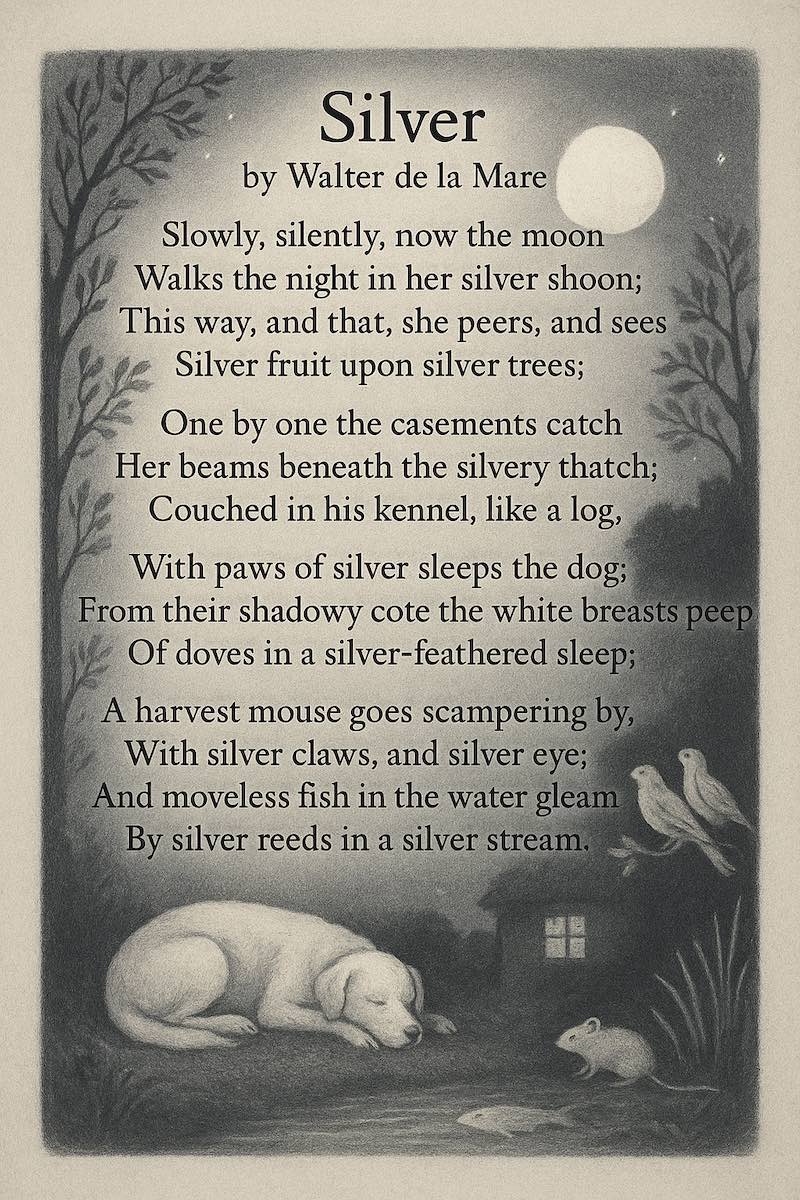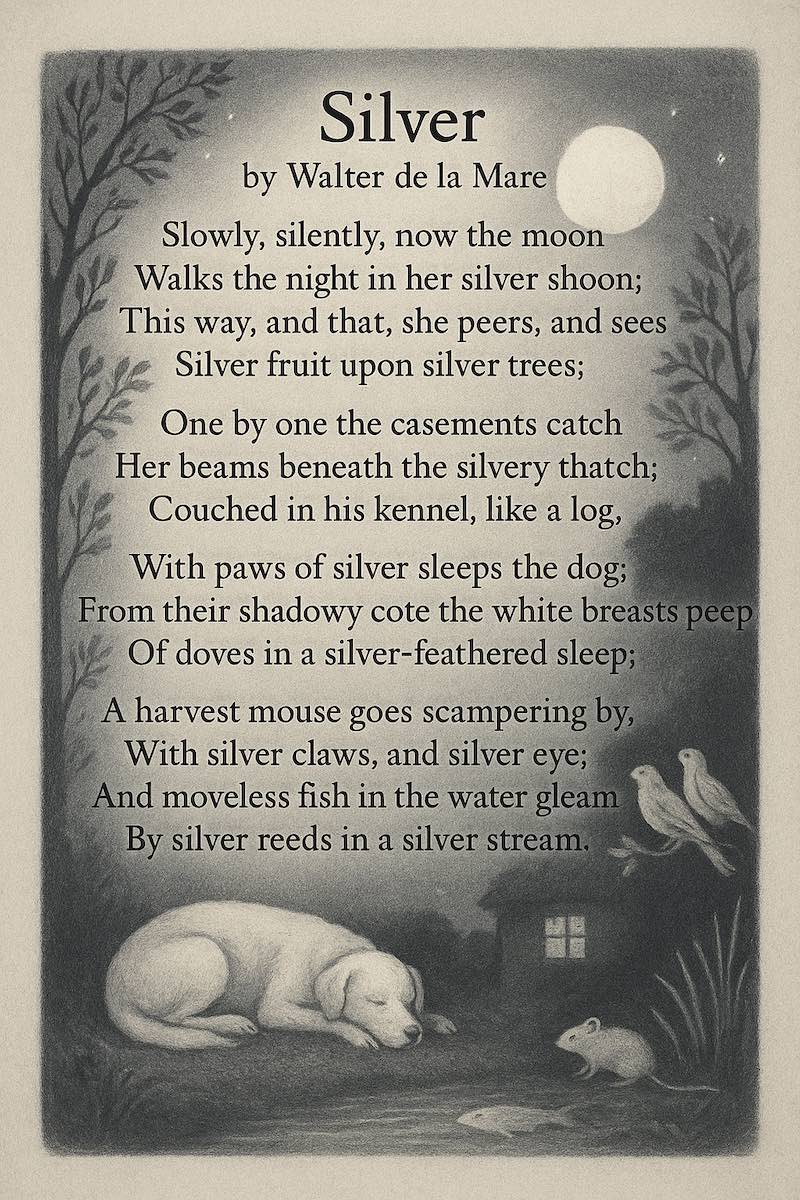Moonlit Magic: The Quiet Beauty of Walter de la Mare’s “Silver”
Walter de la Mare’s “Silver,” first published in 1913, is a poem that uses imagery and alliteration to weave a spell of moonlit magic. It is a quiet masterpiece that slows the reader down, forcing them to observe the familiar world transformed by night.
The Poem
Slowly, silently, now the moon
Walks the night in her silver shoon;
This way, and that, she peers, and sees
Silver fruit upon silver trees;
One by one the casements catch
Her beams beneath the silvery thatch;
Couched in his kennel, like a log,
With paws of silver sleeps the dog;
From their shadowy cote the white breasts peep
Of doves in a silver-feathered sleep;
A harvest mouse goes scampering by,
With silver claws, and silver eye;
And moveless fish in the water gleam
By silver reeds in a silver stream.
The Insight: All That Glitters
The power of “Silver” lies almost entirely in a single, repeating device: the word "silver". De la Mare employs this word nine times, using it not just as a color but as an adjective that transforms every noun it touches—from the shoes (shoon) of the moon, to the dog’s paws, the doves' feathers, and the stream's reeds.
This repetition serves two key purposes:
-
Unity and Atmosphere: It coats the entire scene in a cold, quiet, unified atmosphere, representing the pervasive light of the full moon.
-
Highlighting the Ordinary: By using this simple, shimmering word, de la Mare elevates ordinary objects—a dog, a mouse, trees—into figures of gentle, mysterious beauty, showing us that even the common world has a magical layer just beneath the surface of the daylight.
It is a perfect example of a poem where brevity meets beauty, inviting us to listen and look closely.

